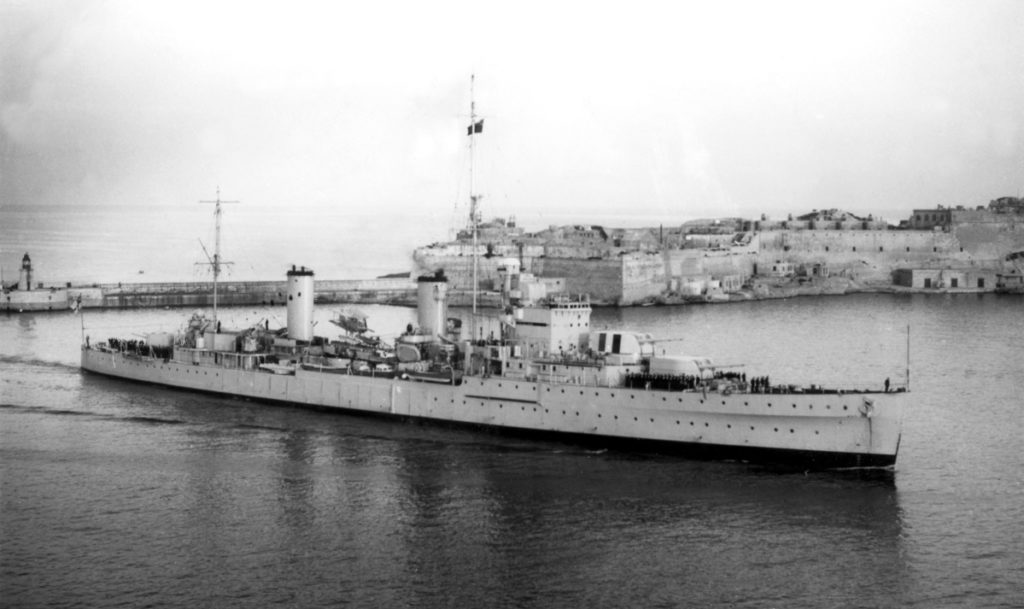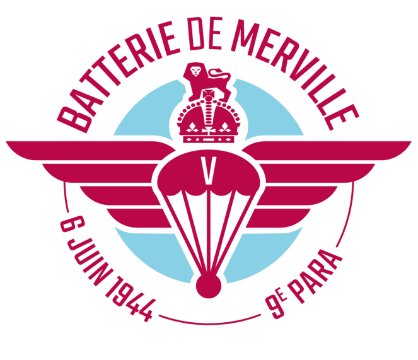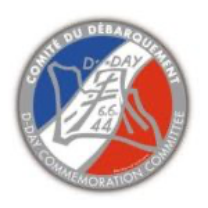Attacking the battery
Accueil » The Museum » The Battery » Attacking the battery
The rendezvous point on the drop zone
There was a growing concern at the meeting point on Drop Zone V
The first to discover the high drama at the rendezvous point was the last to take off, namely Captain Hal Hudson. As the last to leave, he should have found almost the entire 9th Battalion at the rendezvous point. However, he could not believe his eyes. He thought that he had dropped in error and that he had misjudged the location.
Contact with Lieutenant-Colonel Terence Otway, however, was to prove him wrong.
Terence Otway was under extreme stress. He still hoped that other men and equipment would join his paratroopers at the rendezvous point. Only one in five men came forward. The majority of the 9th Battalion was missing.
Everyone was horrified by this situation.
Major Alan Parry, who scanned the skies for a long time to mark out the Drop Zone for the five expected gliders, informed Lieutenant Colonel Terence Otway that they too should be considered missing. In fact, four of these five gliders carrying equipment essential for the paratroopers were scattered off target into ans around the flooded marshes and one broke its tow rope and came downin the raging waves of the English Channel, killing all on board. This also explains why Sergeant Major Miller did not have his mine detectors and marking tapes. Moreover, one of the three gliders intended to land later on top of the Battery had broken its tow rope but managed to land back in the UK, returning to Normandy next day.
The loss of these five gliders left the 9th Battalion without ammunition, Jeeps, mortars, anti-tank guns, light bridges for the ditch, machine guns, demolition equipment, ambulance, medical equipment, or even a link with the cruiser Arethusa
The mortars were all the more crucial as the flares designed to guide the force of the 3 gliders that were to crash into the battery required a mortar to shoot them.
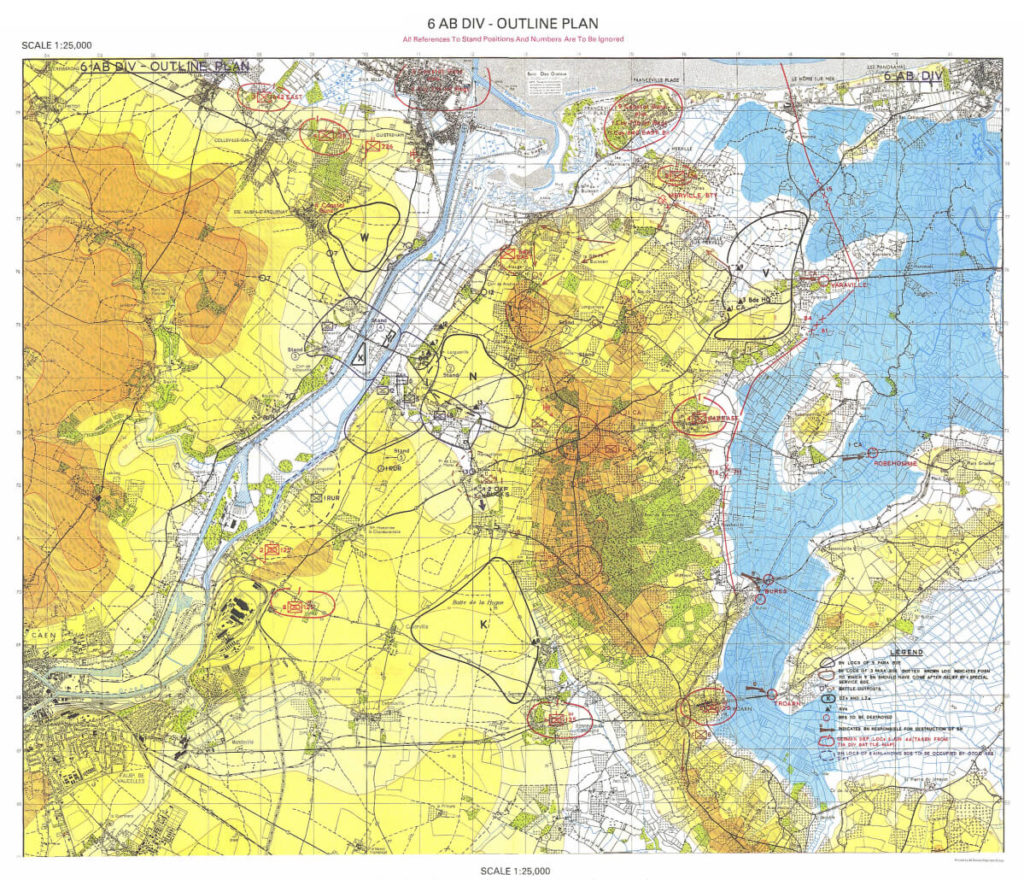


Lieutenant Colonel Otway's decision
Maintaining the objective
Lieutenant-Colonel Terence Otway had only 150 paratroopers equipped with small arms, Sten guns and grenades, instead of his 750 men of the 9th Battalion. His medical officer was present, but only with a few nurses instead of the anticipated thirty or so. He could only count on 6 Bangalore torpedoes instead of the 60 or so originally planned. He had only one machine gun. And no more radio sets either.
The 9th Battalion suddenly found itself in a situation of horrible deprivation.
Despite this appalling state of affairs, however, Lieutenant-Colonel Terence Otway maintained his objective. He was about to launch everyone into the assault. Failure was not an option, it was not even thought about. The guns of the Merville Battery had to be neutralised at all costs. The landings demanded it. And so did the honour of the Battalion. Lieutenant-Colonel Terence Otway thought of the Allied forces already on their way. He thought of all those men who, defenceless under the combined fire power of those four guns, would die a horrible death if they were not silenced. He would therefore set all those men in motion to assault the Merville battery.
He would wait until the last moment before ordering his column to advance. Major Alan Parry led the way.
It was 2.50 am on 6 June 1944.
The progression towards the Merville battery
Only three hours left to reach the battery and silence it.
About 2,500 metres separated the 9th Battalion from the battery. The column moved through the night with utmost care. They had practised this course in training over and over again. But not in conditions like these!
They finally reach the junction point with the de-mining and reconnaissance unit. This crossroads is now known as the 9th Battalion Crossroads. An old headstone now stands at this crossroads for posterity. Sergeant Major Miller reported to Lieutenant-Colonel Terence Otway.
Lieutenant-Colonel Terence Otway quickly assessed the new information and redefined his assault plan. Only two gaps would be opened in the barbed wire, and the four assault groups would attack the pillboxes through these. One per group. The paratroopers who had detonated their Bangalore torpedoes would give the attacking force the best cover they could. He would position a machine gun in the cover of the left flank and a light machine gun in the cover of the right flank. He would also position a light machine gun to attack the entrance to the battery. And finally, the remainder would be a reserve and covering force for the four groups assigned to neutralise the guns.
As for him, he would stand with the reserve force inside the barbed wire in front of the open gaps.
Lieutenant-Colonel Terence Otway gave the orders and Major Alan Parry was put in charge of the main assault. Everyone was ready. And the column set off again through the night.

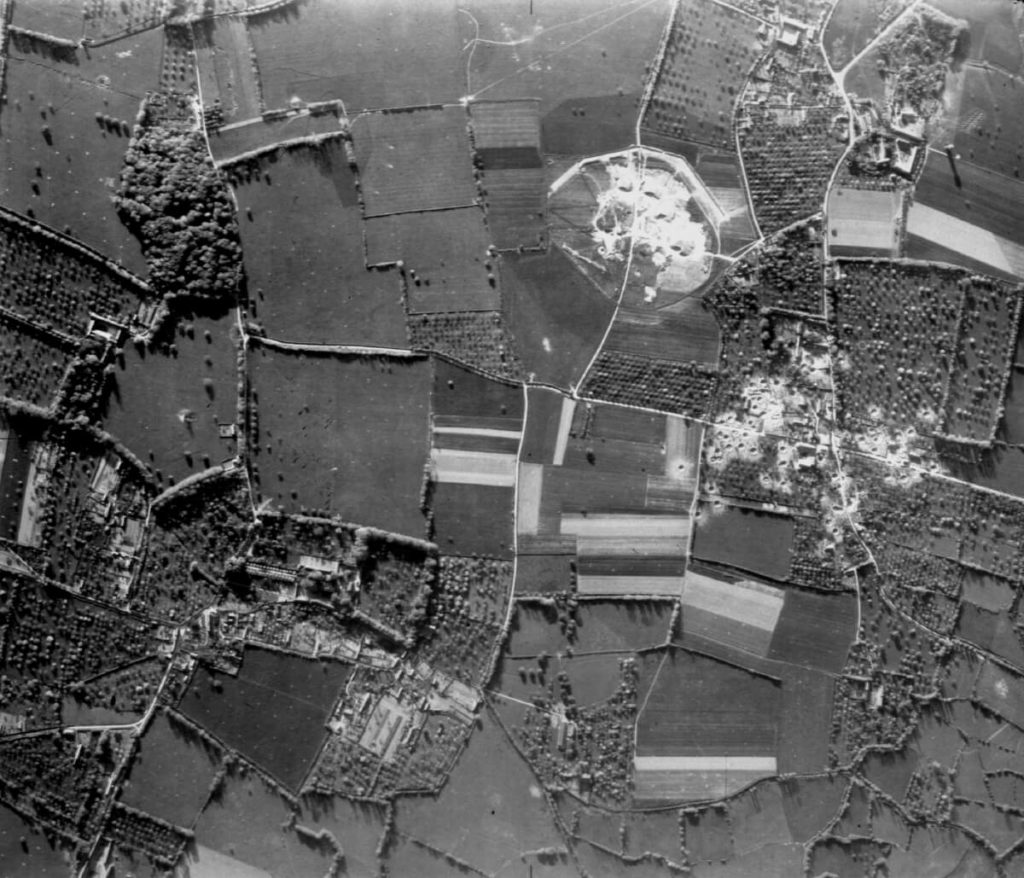

The positioning of the 9th Para for the assault
Major Alan Parry, in order to lead the assault force that had to break through and win at all costs, relied on Lieutenant Jefferson, Lieutenant Dowling, Sergeant Major Ross and Sergeant Long. They were placed at the head of each attack unit.
By now it was 4 am. The dawn was approaching. The paratroopers of the 9th Battalion took up their positions after joining the road from Le Calvaire to Descanneville. The Vickers machine gun was installed at the location marked with a small black circle on the map opposite. In the field, this position effectively provided the full field for cover of flank by a machine gun. Most of the battalion quickly turned left to take the path through the battery and took cover in the orchard ready for battle.
Suddenly, two gliders appeared out of nowhere. There were no flares to help them in their crash mission!
One of them disappeared as quickly as it appeared, but the other, flown by Lieutenant Hugh Pond, was preparing to dive onto the pillboxes. Everyone in the shelter of the orchard held their breath, but everyone also quickly realises that the battery’s flak was proving fatal for the glider. The tail of the Horsa was in flames. Its dive was compromised: it was a critical moment. In a last ditch effort it continued to fly low over the pillboxes, but crashed a little further south, into a hedge bordering the road that the 9th Battalion had taken on its approach to the battery. Lieutenant Hugh Pond was well aware of the high explosivity of the weapons that he was carrying. If he managed to reach the ground, he could not be certain that his crash would not bring his mission to a brutal and final end. The position of the crash is shown in the illustration above. Lieutenant Hugh Pond emerged from the crash with severe concussion.
Before he reached the ground, Lieutenant-Colonel Terence Otway asked Sergeant-Major Miller to come to his aid.
In the meantime the paratroopers, who had to take up position at the battery entrance, continued for about 100 metres along the road from Le Calvaire to Descanneville. Before turning, in turn, to their left, they destroyed a German support point armed with MG machine guns (see illustration).
All paratroopers were now in place, ready to attack. All were waiting for the signal to attack. It was agreed that the explosion of the Bangalore torpedoes would be the signal for the attack.
Of course, the alert is given inside the battery: the assault is imminent.
The shock of the assault
“They didn’t know it was impossible, so they did it.”
The Bangalore torpedoes exploded. The signal for the assault was given.
Lieutenant Colonel Otway yelled: “Get in, get in! Go for it, go for it!” And all his men, with one voice, bellowed the same words.
The paratroopers who had opened the gaps threw themselves on the ground to optimise the speed of penetration of the assault forces, who would literally run over their bodies. They would have to move even faster as there were only two gaps for four groups of attackers. In addition, they needed to minimise their chances of getting caught in the barbed wire.
The four groups of paratroopers rushed in, charging as one. They ran into the minefield between them and the open gaps in the barbed wire, and had no white ribbons to clearly indicate the cleared paths.
In this minefield, they ran with all their energy towards their companions who had flattened themselves on the ground to help them as best they could. The German MG machine guns crackled with devastating fire. The Germans in the trenches were firing from all sides. A hail of bullets rained down on Major Alan Parry’s men in a scene of unutterable chaos, but the paratroopers did not falter. Death whistled on all sides, throwing its heart-rending lightning through the night. Detonating mines, a deluge of bullets, grenades, explosions, tracer bullets, clouds of dust, bomb holes and shrapnel, all conspired to stop the brave paratroopers in their heroic charge.
As soon as they had passed over the backs of their companions, the companions opened their covering fire. Bullets were also raining down on them. The Vickers piloted by Sergeant McGeever, an expert marksman, silenced some enemy machine guns with his assistants. But the violence and density of the enemy fire was hellish.
A minute seemed like an eternity. Lieutenant Jefferson collapsed in the middle of the minefield. Captain Hal Huson was cut down by a burst of machine-gun fire. Major Alan Parry was stopped dead in his tracks, badly wounded in the leg. Other paratroopers fell but the paratroopers continued the superhuman assault effort at all costs, with Sten guns at the hip and grenades to give the enemy the slip.
Things were moving frightfully fast and Lieutenant-Colonel Otway knew that the die was cast. He had taken up a position to the right of a gap in the barbed wire and was trying to see through the chaos. Then, on seeing the furious defensive fire from the Germans, Terence Otway decided to commit his reserve force to support the head of the attack in its impetuous movement. It was essential for the spirited advance of the paratroopers towards the front line not to be broken. He must lead them to the guns to be silenced. He even considered the possibility of savage hand-to-hand combat..
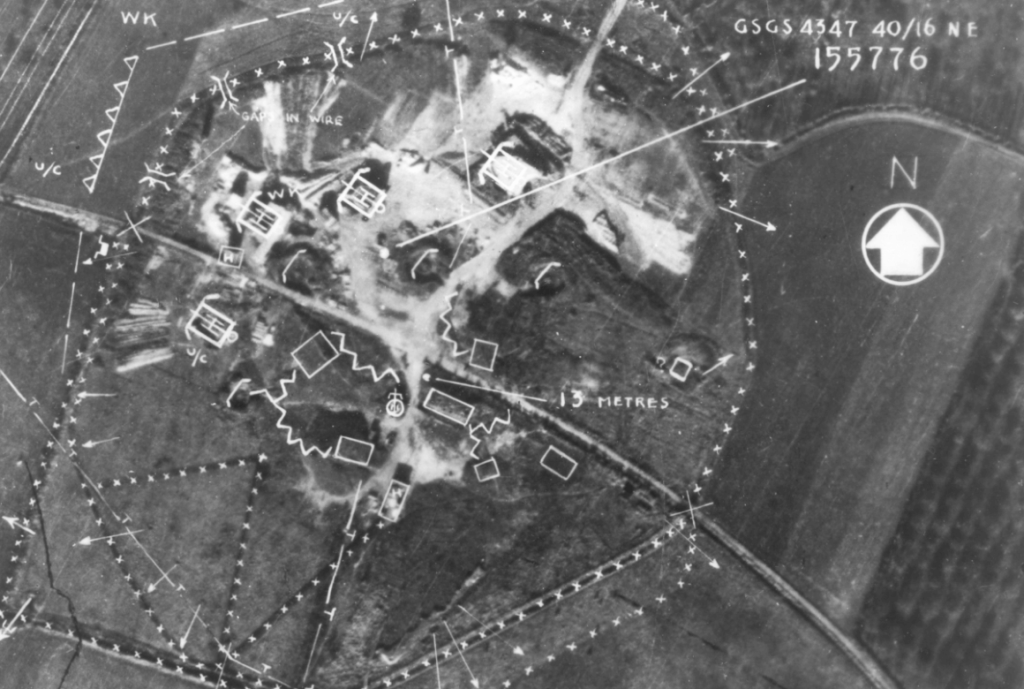


The neutralisation of the Merville Battery
The paratroopers of the assault force reached the pillboxes that housed the Merville guns.
Even in this critical situation of chaos and reduced effectiveness, each paratrooper knew precisely what he had to do, and he did it with unwavering determination. They had trained hard and, as Brigadier James Hill thought, they were at the peak of their fitness and therefore equipped to confront the unimaginable. And they had to confront it! But they had to be armed with exceptional courage, as their weapons were nothing short of pathetic.
A torrent of fire poured down from the battery. Grenades began to explode inside the pillboxes, through the doors, through the ventilation pipes. Sten salvos were fired, explosions roared like thunder and amidst the screams of the wounded, the dust and the cursing, the parachutists entered the pillboxes. Some Germans came out to surrender, others continued to fire fiercely; but the last pockets of resistance were finally silenced.
Major Alan Parry, dragging his garrotted leg, came to direct the neutralisation of the guns by having the remaining explosives placed in the breech. After the explosion, he got out of the pillbox as best he could to see the damage caused by the charge through the doorway. Suddenly a shell whistled and exploded near pillbox no. 1. Major Alan Parry, already badly hit, felt a very sharp pain in his hand, which he literally felt coming off as though it were detaching from his arm. After an anxious glance, he was relieved to see that his hand was still at the end of his forearm, although cut by a piece of shrapnel from the shell that fell near him. He had just been hit by a counter-battery shell ordered by Lieutenant Steiner from another German battery. After his inspection of pillbox 1, Major Alan Parry channelled all his energy into hobbling to the other pillbox. More counter-battery firing started and the shells fell with a thunderous crash all around the battery.
Lieutenant-Colonel Otway went from pillbox to pillbox to take stock of the guns. He went to check on the able-bodied and wounded men. He also saw the dawn and knew that if the Arethusa cruiser did not receive a signal of success it would kill all the surviving 9th Battalion paratroopers with its salvos. He knew that time was running out as it was almost time for the naval bombardment to be launched in preparation for the landing. He also noted the very high number of casualties and the great efforts being made by the medical corps working in a situation where it lacked everything..
Lieutenant-Colonel Otway and all his men were now thinking only of the threat from the Arethusa cruiser. It would have to be warned urgently.
The Arethusa cruiser must be notified
If the cruiser Arethusa received no communication from the 9th Battalion that the Merville Battery had been successfully neutralised, Command would conclude that the mission had failed and would attempt to neutralise the battery itself with an intense naval bombardment.
But what could be done without the Navy men parachuted in with the 9th Battalion to establish a link with Arethusa, inform her and possibly direct her fire if the effort to neutralise the battery failed? These Navy men, however, never showed up at the Drop Zone meeting point.
To make matters worse, the 9th Battalion no longer had any means of communication. Time passed quickly and the mobility of the 9th Battalion with its wounded was more than just reduced.
A carrier pigeon that escaped the hell was released. Then a yellow rocket was fired.
Everyone was rushing to escape the battery perimeter with anxiety weighing ever more heavily on their helmets as the minutes ticked by.
The Arethusa cruiser did not fire.
And the 9th Battalion left the Merville Battery with heavy losses.
